 |
|
Research
|
|
Cemetery Soils: A Window on the Past?
The Coastal Plain of the Mid-Atlantic region has undergone dramatic changes in the last few centuries. Early colonial descriptions indicate rich soils suitable for agriculture as evidenced by the rapid deforestation for cultivation. Over the past ca 350 years there has been considerable soil erosion and degradation due mainly to deforestation, intensive agriculture (especially tobacco farming) and poor if any soil conservation practices. Other than cursory written descriptions, little is truly known of the soils present at the time of European colonization. Cemeteries on the Lower Eastern Shore of Maryland provide potentially valuable markers for measuring anthropomorphic induced changes. Common practice has been to locate graveyards on higher ground, typically on summits of ridges, near family farmsteads. Over time, and as land tenure changed, new owners respected family cemeteries by not disturbing the graves. They also continued cultivating the property, leaving many of these features as isolated, remnant knolls elevated above the surrounding fields. These cemeteries may give us a window on the past, providing remnants of earlier soils.
Collaborators: Sam Geleta - Biology, Mike Folkoff & Brent Zaprowski - Geography |
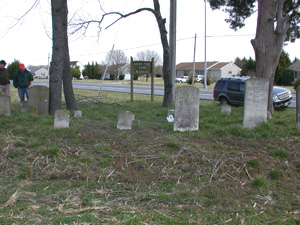 |
|
Pre-Colonial Forests of Somerset & Wicomico Counties
The aim of this project is determine the species composition of the colonial forests of Somerset and Wicomico Counties in the 17th century. Witness trees (trees used to mark property lines) were obtained from land records. The pre-colonial forests were dominated by oaks and pines, while in the modern forest, red maples have replaced oaks as the dominant hardwood. We are currently correlating tree species with soil type in an effort to determine what controlled the spatial distribution of the different species.
Collaborators: Mike Folkoff & Art Lembo - Geography |
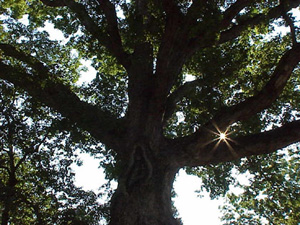 |
|
John Smith's Map of the Chesapeake:
An Accurate Depiction of the Forest?
John Smith produced the first map of the Chesapeake Bay region. This map contains a large number of depictions of various trees. In some cases it is possible to determine the genus depicted, especially among the conifers. The aim of this project is determine if the trees represent an accurate depiction of the arboreal species composition of the Chesapeake region or were added solely for decoration. Comparisons will be made with Witness tree data (see above) from the region.
Collaborator: Mike Scott - Geography |
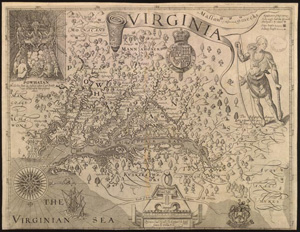 |
|
Colonial Agriculture on St. Kitts
The island of St. Kitts (St. Christopher) is a small island (269 km2) located in the eastern Caribbean (17° 20’ N, 62° 45’ W). St. Kitts was discovered by Christopher Columbus in 1493 and settled by both the English and French in the early 17th century. After much dispute the island was yielded by the French to Great Britain by the Treaty of Utrecht in 1713 (Edwards 1793). All lands previously owned by French Planters, with the exception of those who swore allegiance to the British Crown, were then sold off. The aim of this project is to reconstruct agricultural practices of the English Planters on St. Kitts during the early 17th century, with particular emphasis on sugar and indigo production and the impact of these agricultural practices on the environment of the lowland regions of St. Kitts. The agricultural data from the French Land Records represents a rare sample of early European agricultural practices in the Caribbean.
Collaborator: Victoria O'Flaherty - St. Kitts and Nevis National Archive |
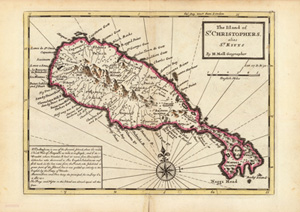 |
|
The History of Spruce Beer
Spruce beer was a popular drink during the 18th and 19th centuries. It was generally made from the needles and young branches of the black spruce (Picea mariana). The beer was made by boiling the spruce in water, and adding molasses and yeast. This produced a small beer with a low alcohol content. A stronger drink, Calibogus, was a mixture of spruce beer and rum. Before the use of lemon and lime juice, spruce beer was the best antiscorbutic. It was used to prevent both land and sea scurvy. During the American revolutionary war, both the British and American troops were given rations of spruce beer.
|
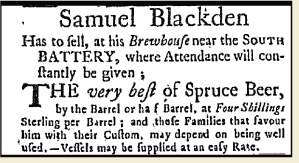 |
|
© 2009 Potting Soul Design
|
|